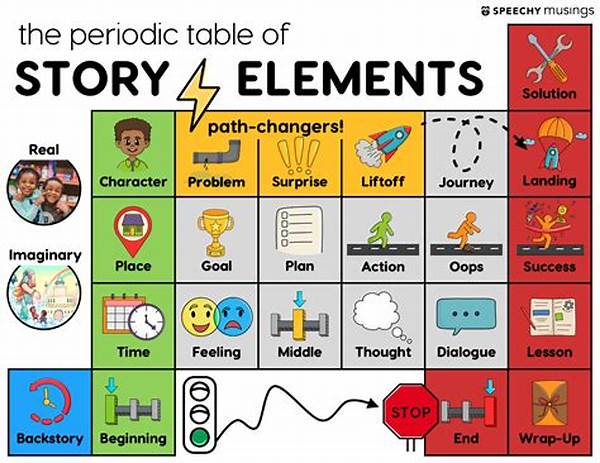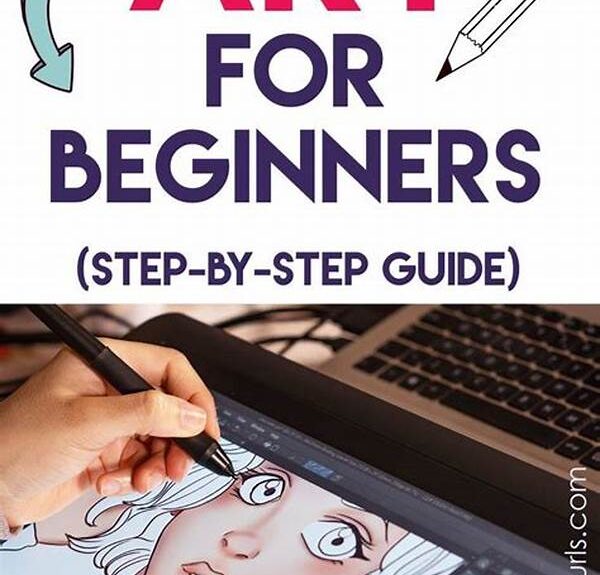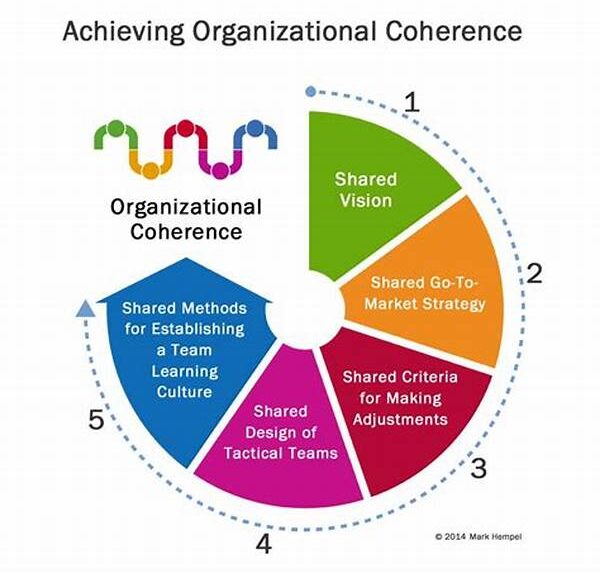In the art of storytelling, crafting a compelling narrative involves more than just stringing together a series of events. The elements of a well-crafted storyline are the building blocks that create a cohesive, engaging, and memorable story. Whether you’re penning a novel, writing a screenplay, or drafting a short story, understanding these elements is crucial to capturing your audience’s attention and emotion.
Read Now : Developing Cohesive Color Themes
Core Components of a Well-Crafted Storyline
A well-crafted storyline encompasses several key elements that combine to create a seamless narrative. Firstly, a strong storyline requires a well-defined plot. This involves a clear sequence of events that unfold logically and engage the reader from start to finish. Secondly, compelling characters are the backbone of any engaging story. These characters must be relatable, with distinct motivations and challenges that evolve throughout the narrative. Thirdly, setting plays a crucial role, providing the backdrop against which the story unfolds. It shapes the mood, influences the characters, and can even serve as a character itself. Finally, themes and conflict are indispensable elements that drive the narrative forward and resonate with readers on a deeper level. The elements of a well-crafted storyline are intertwined, each contributing to the story’s pace, depth, and overall impact. Together, they create a tapestry that invites readers to explore new worlds and experiences through the lens of vivid imagination.
Essential Elements Explained
1. Plot Development: A series of events structured to maintain suspense, drive action, and introduce conflict. It is the backbone of the narrative that captures interest.
2. Characterization: Well-developed characters with distinct traits and motives are vital elements of a well-crafted storyline, ensuring readers emotionally invest.
3. Setting and Atmosphere: The environment where the story takes place, providing context and influencing the narrative mood and tone.
4. Conflict: Central to the plot, providing obstacles for characters to overcome, ensuring tension and driving the story forward.
5. Theme: The underlying messages or morals, allowing readers to find deeper meaning in the storyline and connect personally.
Delving Deeper into Storyline Dynamics
Creating a storyline is akin to assembling a puzzle, where each piece, or element, must fit precisely to form a complete picture. This intricate process involves balancing plot, character, and setting, ensuring they harmonize to create depth and intrigue. A well-crafted storyline is not merely about what happens, but about how and why it happens. The interaction between characters and their environment must be believable and reflective of authentic human experiences. This empathetic connection is strengthened through nuanced themes that resonate with readers, inviting them to reflect on their own lives. The elements of a well-crafted storyline are the threads that weave this complex tapestry, allowing readers to immerse themselves in narratives that challenge their perspectives and emotions.
Moreover, a successful storyline requires an author to remain adaptable, reshaping elements as the narrative evolves. The balance between predictability and surprise is crucial, keeping readers engaged while delivering unexpected twists that maintain their interest. By ensuring that each element is thoughtfully crafted and woven into the narrative, authors can create stories that not only entertain but also provoke thought and inspire emotion. Ultimately, the elements of a well-crafted storyline are the foundation upon which timeless tales are built, leaving a lasting impression on those who encounter them.
Aspectual Insight into Storycraft
To better understand the mechanics of storytelling, examining each aspect individually can provide a clearer picture of its role in the larger narrative. Here are components that are indispensable in the crafting process:
1. A Strong Hook: Capturing the reader’s attention from the first sentence.
2. Character Arcs: Reflecting growth and change, keeping readers invested.
3. Climactic Moments: Heightening tension and delivering payoff to the narrative buildup.
4. Resolution: Providing closure to the conflicts introduced, satisfying reader expectations.
Read Now : Adaptive Text Scaling In Mobile Design
5. Subplots: Adding layers, enriching the main narrative while deepening the world.
6. Dialogue: Giving voice to characters, advancing the plot naturally and believably.
7. Pacing: Balancing narrative speed, ensuring a dynamic and engaging flow.
8. Imagery: Evoking scenes vividly within readers’ minds, enhancing experience and immersion.
9. Foreshadowing: Gently hinting at future events, creating anticipation and suspense.
10. Consistency: Maintaining logical coherence in plot, characters, and settings throughout the story.
Exploring the Depth of Storytelling
At its core, storytelling is about connection and transformation. The elements of a well-crafted storyline serve as the vehicle through which this transformation occurs. Characters embark on journeys, facing challenges that push them to their limits and often reveal profound truths about themselves and the world around them. This metamorphosis is not only central to the characters’ development but also instrumental in engaging the reader’s imagination and emotions. A well-crafted storyline acts as a mirror, reflecting the complexities of human nature and the intricacies of life’s many scenarios.
The narrative journey is enriched by the setting and atmosphere that envelops the storyline. This environment not only grounds the reader in the story world but also enhances the thematic resonance of the narrative. Richly developed settings allow readers to escape into alternate realities, while simultaneously providing context for unfolding events. It is within this immersive space that conflict arises, challenging characters to adapt and grow. As these narrative elements coalesce, they form a symphonic composition that resonates with readers long after the final page is turned, embodying the timeless power of a well-crafted storyline.
Crafting Emotional Resonance
In crafting an impactful storyline, the emotional dimension is paramount. The elements of a well-crafted storyline are infused with emotions that resonate with the reader on a deeply personal level. By situating characters in realistic dilemmas, the narrative creates a space for readers to empathize and reflect on their own experiences. This emotional engagement is the heart of what makes a story memorable and meaningful. Furthermore, integrating emotional beats within the plot structure ensures that the narrative is not only coherent but also resonant, providing a rhythm that guides the reader through the story’s peaks and valleys. Character decisions and transformations should echo genuine human choices, reinforcing the narrative’s believability and depth.
Complementary to these emotional layers, thematic exploration enriches the storyline, inviting readers to ponder profound questions and truths. Themes weave through the narrative, illuminating character motivations and narrative outcomes. The best stories use their themes to comment on universal experiences, offering insights that remain with readers long after they close the book. Through these elements, a storyline transcends its pages to leave a lasting mark, engaging readers’ minds and hearts alike.
Conclusion: Embracing the Art of Storytelling
In summary, the elements of a well-crafted storyline are a symphony of interwoven components that collectively captivate and engage readers. These elements, from plot and character development to setting and theme, work in harmony to produce narratives that resonate with authenticity and depth. By thoughtfully integrating these components, authors can create narratives that not only entertain but also enrich and inspire. The essence of storytelling lies in its ability to transport readers into new realms, challenge their understanding, and evoke a range of emotions. It is through the seamless execution of these elements that a storyline becomes more than mere words on a page; it transforms into a powerful vehicle for connection and change. As writers embark on crafting their narratives, understanding and mastering these elements will inevitably lead to stories that stand the test of time, leaving readers both moved and enthralled.



